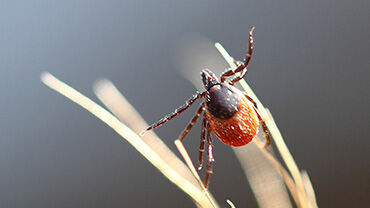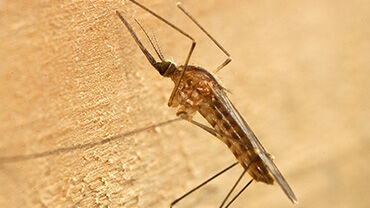Preventing vector-borne diseases in Europe: VectorNet issues the first protocols for vector sampling
Vector sampling protocols outlining the recommended methods for collecting vectors have been issued today by ECDC and EFSA, to support entomologists and public-health professionals in Europe. It is a first attempt to summarise best-practices in terms of methods and strategies for sampling mosquitoes, sandflies, biting midges and ticks. The protocols were developed within the VectorNet project.
Monitoring and surveillance of vectors
Monitoring and surveillance of disease vectors is essential for preventing vector-borne diseases. Each monitoring/surveillance campaign starts with a sampling strategy. The variety of methods used by European countries to sample vectors limits a quantitative comparison of vector data.
Although comprehensive guidelines for surveillance of invasive mosquitoes and native mosquitoes have been available from ECDC, a summary document with standard sampling strategies had not been published until now.
Sampling protocols for vectors
The VectorNet sampling protocols offer a uniform way to sample vectors and describe the optimal methods for data collection, conservation of specimens, identification and quality control – all based on VectorNet practices.
Each section of the report is dedicated to a vector species (mosquitoes, sandflies, biting midges or ticks) and describes in detail:
- which traps to use to meet specific study objectives;
- how to select a sampling site;
- when to sample and for how long or how often;
- how to collect samples;
- how to preserve them;
- how to identify them;
- how to assess quality.
Using the sampling protocols
Professionals involved in the surveillance, monitoring or control of vector-borne diseases can apply the methods in their work. The document may also be of interest to public health decision makers, policy makers and stakeholders, as well as to non-experts in mosquito surveillance, monitoring and control.
The protocols can be applied to the entire geographic area of Europe, i.e., in all EU Member States and EEA/EFTA countries. The methods presented here can also be applied to a few EU Outermost Regions and Overseas Countries and Territories, but generally should be adapted to the local situation.
VectorNet, a joint initiative of the European Food Safety Authority (EFSA) and the European Centre for Disease Prevention and Control (ECDC), supports the collection of data on vectors and related pathogens, both in animal and human health.
VectorNet is looking for vector-borne disease experts who are interested in sharing data on the distribution of mosquito, tick, sand fly and culicoides vectors. They are invited to contact ECDC and EFSA via the VectorNet mailbox VectorNet@ecdc.europa.eu for further information.
Read the report
Surveillance and monitoring
Field sampling methods for mosquitoes, sandflies, biting midges and ticks
This report of the European Centre for Disease Prevention and Control (ECDC) and the European Food Safety Authority (EFSA) was produced by the VectorNet project (European network for sharing data on the geographic distribution of arthropod vectors transmitting human and animal disease agents).






